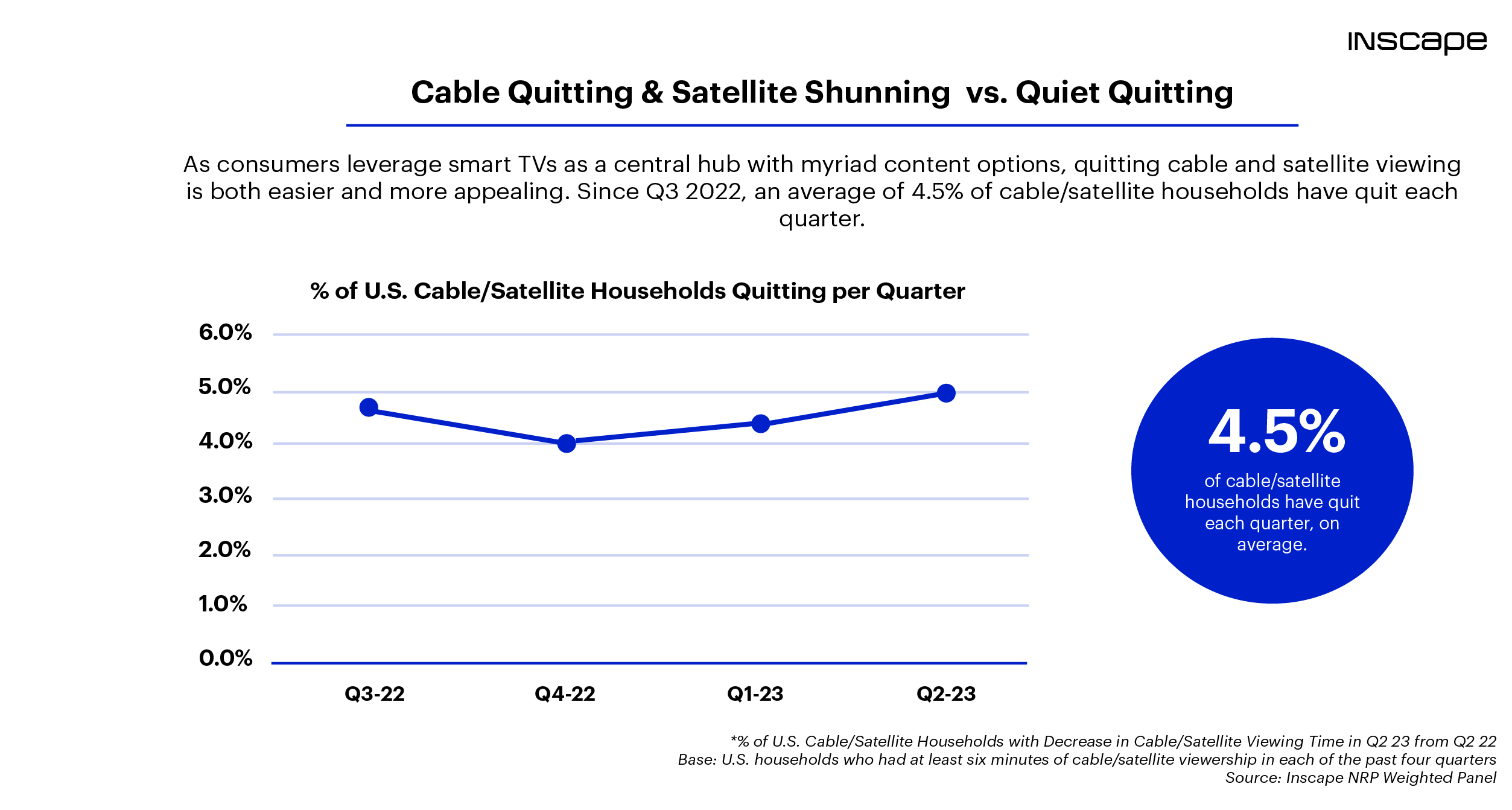OCTOBER 18, 2023
Quiet Quitting - Inscape Report Finds Viewers Are Paying For TV Services They Don't Fully Use

While cutting the cord to a cable or satellite service is often a pretty overt and defined act, new data from Inscape suggests that the migration away from cable/satellite towards streaming is more pronounced than any “cord-cutting” stats suggest.
According to Inscape’s recent Q2 2023 TV Market Trends report , about 5% of U.S. cable/satellite households stopped viewing through satellite and cable TV inputs in the second quarter of the year.
The analysis also found that some cable/satellite subscribers are actually “quiet quitting” these services – sharply reducing their time spent viewing in either format, while continuing some viewing depending on content type.
These “quiet quitters,” were actually more prevalent than full quitters in Q2 2023. Looking at U.S. cable/satellite households, Inscape found that 9% reduced their cable/satellite viewing by 75% or more from Q2 2022 to Q2 2023 (to account for viewing seasonality), but didn’t fully quit. Additionally, 8.4% of U.S. cable/satellite households had a drop of 50-75% in cable/satellite viewing time in Q2 2023 from Q2 2022.
Why are viewers retaining their cable/satellite viewing habits if they use them so little? The short answer — sports and news.
While streaming has become the dominant source of overall TV viewing in the U.S., people still rely on cable/satellite (and even antenna-based OTA) for their access to sporting telecasts and news programming.
Streaming commands 56.9% of overall TV viewing time, but that falls to 23.1% for sports and 14.7% for news. Cable/satellite/antenna accounts for only 43.1% of overall TV viewing time, but dominates in sports (76.9%) and news (85.3%).
Check out the FULL report: HERE